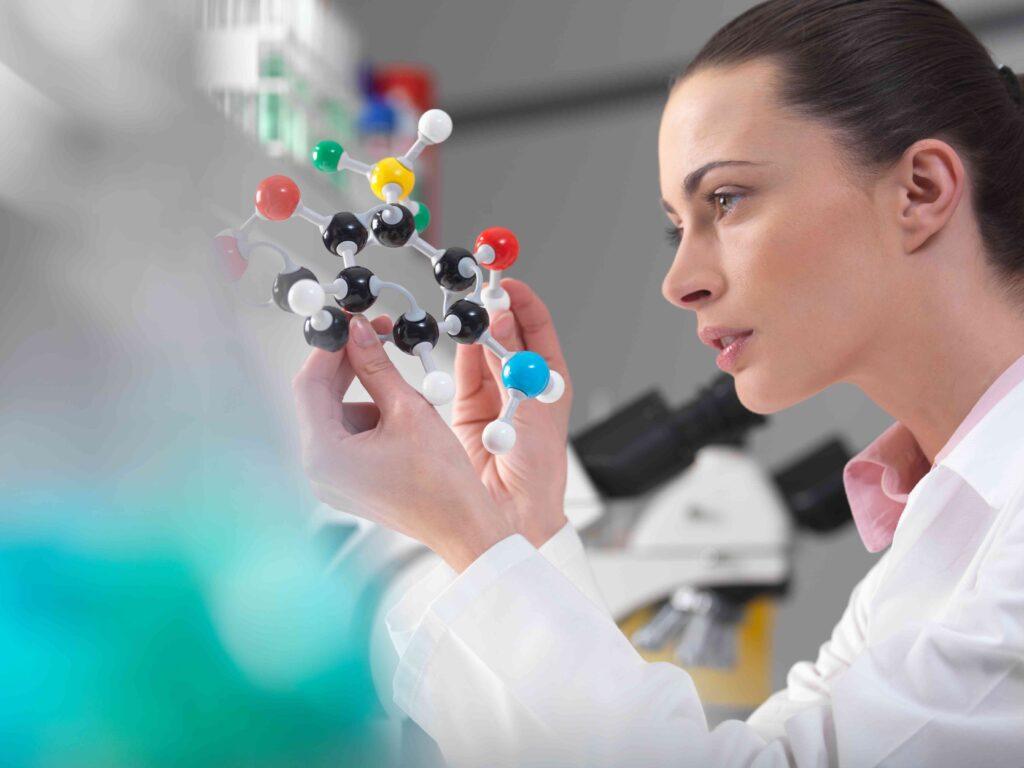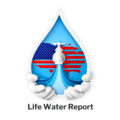TABLE OF CONTENT:
- Pharmaceuticals in drinking water
- Sources of pharmaceuticals:
- Key findings:
- Is It Possible To Avoid Pharmaceuticals In Water?
- The Best Way To Reduce Pharmaceutical Footprints
Are There Pharmaceuticals In Your Drinking Water?
Are you concerned about what might lurk in your drinking water? The answer might surprise you. Pharmaceutical drugs have been found in drinking water supplies in both the United States and Europe. Studies have shown that pharmaceuticals, including antibiotics, hormones, and antidepressants, have been detected in US drinking water supplies. These contaminants can pose a risk to human health, especially for vulnerable populations such as pregnant women and young children. Studies have found that pharmaceuticals are present in up to 60% of domestic or public-supply water systems in the United States.
Pharmaceutical drugs in drinking water are worrying trends and becoming increasingly prevalent. Pharmaceuticals are discharged into our environment through sewage, wastewater, and agricultural runoff. These contaminants then enter our water supplies, where they are consumed.
Studies have shown that pharmaceuticals can be found in drinking water in both low and high concentrations. Drugs such as antibiotics, hormones, antidepressants, and painkillers have been found in drinking water supplies in different parts of the world. The extent of these concentrations can vary, depending on the source and contamination. Pharmaceuticals in drinking water raise concerns about potential health risks and water treatment and regulations. Available studies have reported that concentrations of drugs in surface waters, groundwater, and partially treated water are typically less than 0.1 µg/l (or 100 ng/l), and concentrations in treated water are generally below 0.05 µg/l (or 50 ng/l).

Sources of pharmaceuticals:
In streams EFFLUENT from 24 WWTPs across the country without PMF discharge. Released waters from these two WWTPs were discharged into streams where pharmaceuticals were detected downstream. This was as far as 30 kilometers from one plant’s outfall.
Manufacturing plants are not the only source of pharmaceuticals in water. The livestock industry often uses antibiotics and drugs, and USGS studies have found pharmaceuticals such as acetaminophen, caffeine, cotinine, diphenhydramine, and carbamazepine in streams receiving runoff from animal-feeding operations. Stream water contains pharmaceuticals from you and me. Drugs taken internally are not all metabolized in the body and the excess ends up in our wastewater. The presence of these drugs in streams miles downstream from wastewater treatment plants may seem surprising, but many plants don’t routinely remove pharmaceuticals from water.
Healthcare institutions are another source of pharmaceutical water pollution. Hospitals are probably less of a problem than nursing homes because they typically have on-site pharmacies that return unused drugs for credit or disposal. In nursing homes, however, medications have often been flushed down the toilet or drain after a patient dies or is transferred. Their return policies are usually different from hospitals. As a result of the rules for disposing of opioid painkillers, which allow for disposal down the drain, some nursing homes have inadvertently encouraged this practice.
Drug manufacturing also results in pharmaceutical pollution, although some factories are a bigger problem than others. According to a U.S. Geological Survey study, contamination levels downstream from two drug manufacturing plants in New York State were up to 1,000 times higher than those at comparable facilities.
Agriculture is another major source. It is estimated that 2 trillion pounds of animal waste is generated by large-scale poultry and livestock operations in this country. These wastes contain hormones and antibiotics that help the animals to grow faster and keep them healthy. Inevitably, some antibiotics and hormones leach into groundwater. And that groundwater ends up in your drinking water.
Chemicals are also released into the water when we use drugs. The majority of drugs we swallow are metabolized by our bodies in a fraction of the time. Wastewater is primarily excreted in urine or feces (some is sweated out). As more medications are applied as creams or lotions, their unabsorbed portions can contribute to pollution when they are washed off. An individual using testosterone cream can put as much testosterone into the water as 300 men excreting naturally.
Pharmaceuticals have been found in the drinking water supplies of at least 41 million Americans.
Key findings:
- Anti-epileptic and anti-anxiety medications were detected in a portion of the treated drinking water for 18.5 million people in Southern California.
- San Francisco’s drinking water detected sex hormones.
- The drinking water for Washington, D.C., and surrounding areas tested positive for six pharmaceuticals.
- Three medications, including an antibiotic, were found in Tucson’s drinking water.
- The New York state health department and the USGS tested the city’s water source upstate. They found trace concentrations of heart medicines, infection fighters, estrogen, anti-convulsants, mood stabilizers, and a tranquilizer.
- Contamination is not confined to the United States. More than 100 pharmaceuticals have been detected in lakes, rivers, reservoirs, and streams worldwide. Studies have detected pharmaceuticals in waters throughout Asia, Australia, Canada, and Europe — even in Swiss lakes and the North Sea.
Researchers at the U.S. Geological Survey found that 80% of the water samples taken from 139 streams in 30 states contained measurable amounts of one or more medications. Drugs identified included antibiotics, antidepressants, blood thinners, heart medications (ACE inhibitors, calcium-channel blockers, digoxin), hormones (estrogen, progesterone, testosterone), and painkillers.
The effects of these drugs on drinking water can range from mild to severe. Depending on the type of drug, there can be potential risks to human health. For instance, antibiotics can cause bacterial resistance, hormones can disrupt the endocrine system, and painkillers can cause dizziness and nausea. “Ever since the late 1990s, the science community has recognized that pharmaceuticals, especially oral contraceptives, are found in sewage water and potentially contaminate drinking water,” Janssen tells WebMD.

Is It Possible To Avoid Pharmaceuticals In Water?
There are some steps to minimize pharmaceutical risk in drinking water. The most effective measure is to ensure wastewater is treated properly before discharge into the environment. Agricultural runoff can be managed to reduce the pharmaceutical release into our water supplies.
As outlined in the WHO Guidelines for Drinking-water Quality, the water safety plan approach is the “most effective way to consistently ensure the safety of a drinking-water supply”… through the use of a comprehensive risk assessment and risk management approach that encompasses all steps in the water supply from catchment to consumer. A water safety plan emphasizes the importance of considering risk assessment and risk management holistically from source to tap and adopting preventive measures to reduce the risk of contamination.
There are several methods used to remove pharmaceuticals from water, including:
- Advanced Oxidation Processes (AOPs): AOPs use chemicals or light to break down pharmaceutical compounds in water. Examples of AOPs include ozone treatment, ultraviolet radiation, and hydrogen peroxide.
- Activated Carbon Adsorption: Activated carbon is a porous material that absorbs pollutants, including pharmaceuticals, from water. Carbon can be granular or powdered and is often used in water filtration systems. Activated carbon filters can effectively remove some pharmaceuticals, such as ibuprofen and naproxen.
- Reverse Osmosis: Reverse osmosis is a water treatment process that removes dissolved solids, including pharmaceuticals, by forcing water through a semi-permeable membrane under high pressure.
- Nanofiltration: Nanofiltration is a type of membrane filtration that uses a semi-permeable membrane with smaller pores than reverse osmosis. It can effectively remove some pharmaceuticals from the water.
- Biological Treatment: Biological treatment involves using microorganisms to break down pollutants in water. This method is effective at removing some pharmaceuticals, especially biodegradable ones.
- Ion Exchange: Ion exchange involves exchanging ions in water with other ions, typically through resins. This process can remove some pharmaceuticals, such as those with a positive charge.
- Clay: Clay minerals could be inexpensive and widely available for pharmaceutical removal. For clay materials, the most common types (illite, kaolinite, vermiculite, montmorillonite, bentonite, and sepiolite) have already been used for the removal of a variety of organic micro-pollutants.
- Biochar: Biochar removes pharmaceuticals from water through a process called adsorption, where pharmaceuticals are absorbed and removed from the water. The process of adsorption occurs when the pharmaceuticals are attracted to the surface of the biochar and bind to it, effectively removing the pharmaceuticals from the water.
We must prioritize investments in water treatment technologies that remove pharmaceuticals from our drinking water. This will require collaboration between government agencies, industry, and the public to implement solutions that protect our health and environment.
The Best Way To Reduce Pharmaceutical Footprints
Reducing the pharmaceutical footprint can be achieved in various ways including:
- Proper Disposal: Disposing of unused or expired medications in a responsible manner can prevent them from ending up in landfills or water systems, where they can harm the environment.
- Efficient Production: Pharmaceutical companies can minimize their carbon footprint by using energy-efficient manufacturing methods, reducing waste, and adopting sustainable packaging.
- Encouraging Greener Healthcare: Healthcare providers can reduce their pharmaceutical footprint by promoting healthier lifestyles that reduce the need for medication, and by prescribing medications with fewer negative environmental impacts.
- Collaboration: Encouraging collaboration between different stakeholders such as pharmaceutical companies, healthcare providers, and policymakers can lead to innovative solutions for reducing the pharmaceutical footprint.
- Do not flush unused medicines or pour them down the drain
- Be careful about throwing medications in the trash. It’s better to burn or bury medicines in landfills rather than flush them down the drain or flush them down the toilet. Remove them from the packaging, crush them, and seal them in a plastic bag with some water before throwing them away.
CONCLUSION:
It is imperative to know the potential risks associated with pharmaceuticals in drinking water. While they may not be as visible as other pollutants, they still threaten human health. While it can be difficult to eliminate pharmaceuticals from drinking water completely, we should strive to reduce these dangerous chemicals as much as we can. We should also take steps to ensure that the water we drink is safe to drink. In conclusion, pharmaceuticals in drinking water are serious issues that require immediate attention. By working together and taking proactive measures, we can protect our communities and ensure access to clean and safe drinking water for generations to come.
Discover the true quality of your water with Life Water Report! Get your personalized water analysis report by zip code today and take control of your health and hydration. Don’t wait, start making informed decisions about your water source. Click here to order your report now!”
As for practical filtration and purification, we suggest you install a reverse osmosis (RO) system with a post-alkaline mineral system or install a multi-filter countertop unit that removes the majority of toxic chemicals and then
creates alkalized mineral water with antioxidants.
L. C. (2008, March 10). Drugs in Our Drinking Water? Web MD.
(2011, June 1). Drugs in the water June 1, 2011. Harvard Health Publishing.
J. D., M. M., & J. P. (2008, March 10). Pharmaceuticals lurking in U.S. Drinking water. News.
Mondal, S.; Patel, S.; Majumder, S.K. Naproxen Removal Capacity Enhancement by Transforming the Activated Carbon into a Blended Composite Material. Water Air Soil. Pollut. 2020, 231, 37. [Google Scholar] [CrossRef]
Essandoh, M.; Kunwar, B.; Pittman, C.U.; Mohan, D.; Mlsna, T. Sorptive removal of salicylic acid and ibuprofen from aqueous solutions using pine wood fast pyrolysis biochar. Chem. Eng. J. 2015, 265, 219–227. [Google Scholar] [CrossRef]
M. O. (2019, June 30). Special Issue “Removal of Pharmaceuticals from Water: Conventional and Alternative Treatments”. MDPI.
